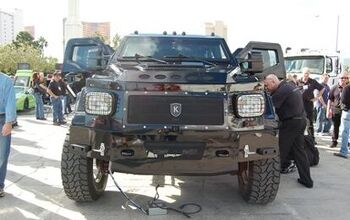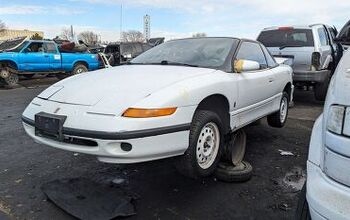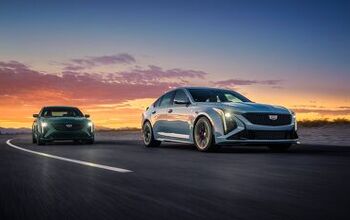E85 Boondoggle of the Day: E20, E30
We’ve pointed it out before: the ethanol industry has a cunning plan to breach the “blend wall” (a.k.a. the fact that American customers don’t want E85). While they’re waiting, hoping and praying for a Titanoboa cerrejonensi-sized gas price spike, they’re planning on using their political leverage to “offer” (i.e., force) motorists E20 and E30 ethanol blends. The big problem: it’s not entirely clear that engines like to run on those blends. (E85-compatible vehicles are, uh, E85-compatible). In fact, it’s pretty clear they don’t. But that’s not going to stop the lobby from trying . . .
“The U.S. Environmental Protection Agency has granted a testing exemption to Renergie Inc. Under the test program, the first of its kind in the U.S., Renergie will use variable blending pumps, not splash blending, to dispense hydrous ethanol blends of E10, E20, E30 and E85 to test vehicles. The testing could help determine blend optimization with respect to fuel economy, engine emissions and vehicle drivability. Vehicles will be involved in the test program which will last for a period of 15 months.”
And what, pray tell, is “splash blending?”
In the U.S., the primary method for blending ethanol into gasoline is splash blending. The ethanol is “splashed” into the gasoline either in a tanker truck or sometimes into a storage tank of a retail station. Renergie believes the inaccuracy and manipulation of splash blending may be eliminated by precisely blending the ethanol and unleaded gasoline at the point of consumption.
And if you eliminate the imprecision, then maybe, just maybe, E20 for everyone! By law! There’d be joy in cornville that day. And while lawn mower, snowmobile and jet ski owners contemplate that possibility, here’s a bit of scientific hype for those who still think food-into-fuel will save the planet. Or something.
Tests conducted in Europe have shown that the use of hydrous ethanol, which eliminates the need for the hydrous-to-anhydrous dehydration processing step, could mean energy savings of between ten percent and forty-five percent during processing, a four percent product volume increase, higher mileage per gallon, a cleaner engine interior and a reduction in greenhouse gas emissions.
More by Robert Farago
Latest Car Reviews
Read moreLatest Product Reviews
Read moreRecent Comments
- Carson D Just don't be the whistleblower who reports on the falsification of safety data. That's a deadly profession.
- Carson D I'd have responded sooner, but my computer locked up and I had to reboot it.
- Todd In Canada Mazda has a 3 year bumper to bumper & 5 year unlimited mileage drivetrain warranty. Mazdas are a DIY dream of high school auto mechanics 101 easy to work on reliable simplicity. IMO the Mazda is way better looking.
- Tane94 Blue Mini, love Minis because it's total custom ordering and the S has the BMW turbo engine.
- AZFelix What could possibly go wrong with putting your life in the robotic hands of precision crafted and expertly programmed machinery?


































Comments
Join the conversation
@crackheadalley You came down here and rented a Chevy Asstra? Good choice. The engine is a 1960s GM engine with minor modifications. Drinks like there's no tomorrow, can't rev for s***, is noisy and shakes all over, low hp for the displacement. Torquey down low though and relatively reliable. So you fly 1000s of miles to another country and rent a Chevy. Probably ate at McDonald's too. What a way to see the world. FWIW, I live down here and don't have as superficial a vision as he does. I mean, I have to deal with this s*** everyday. There are available at Brazilian gas stations: Premium Gasoine : Higher octane stuff that only a Ferrari can fully appreciate Additivated (??) or maybe Special Gasoline: Comes with some cleansing chemicals that reportedly keep your engine cleaner. Common or Regular Gasoline : is just gasoline with no cleaning chemicals. E100 : 100% sugar cane juice, and as a rule of thumb, you have to multiply gas prices by 70% if the price of ethanol is lower, go for it, you lose in mileage, but the car gets some extra hp, burns cleaner (no sludge issues when using ethanol). BTW All gasoline in BRazil comes with, by law, 21 to 27% ethanol. This range is used to "control" price fluctuations. All said, I'd much rather burn dino juice all day long.